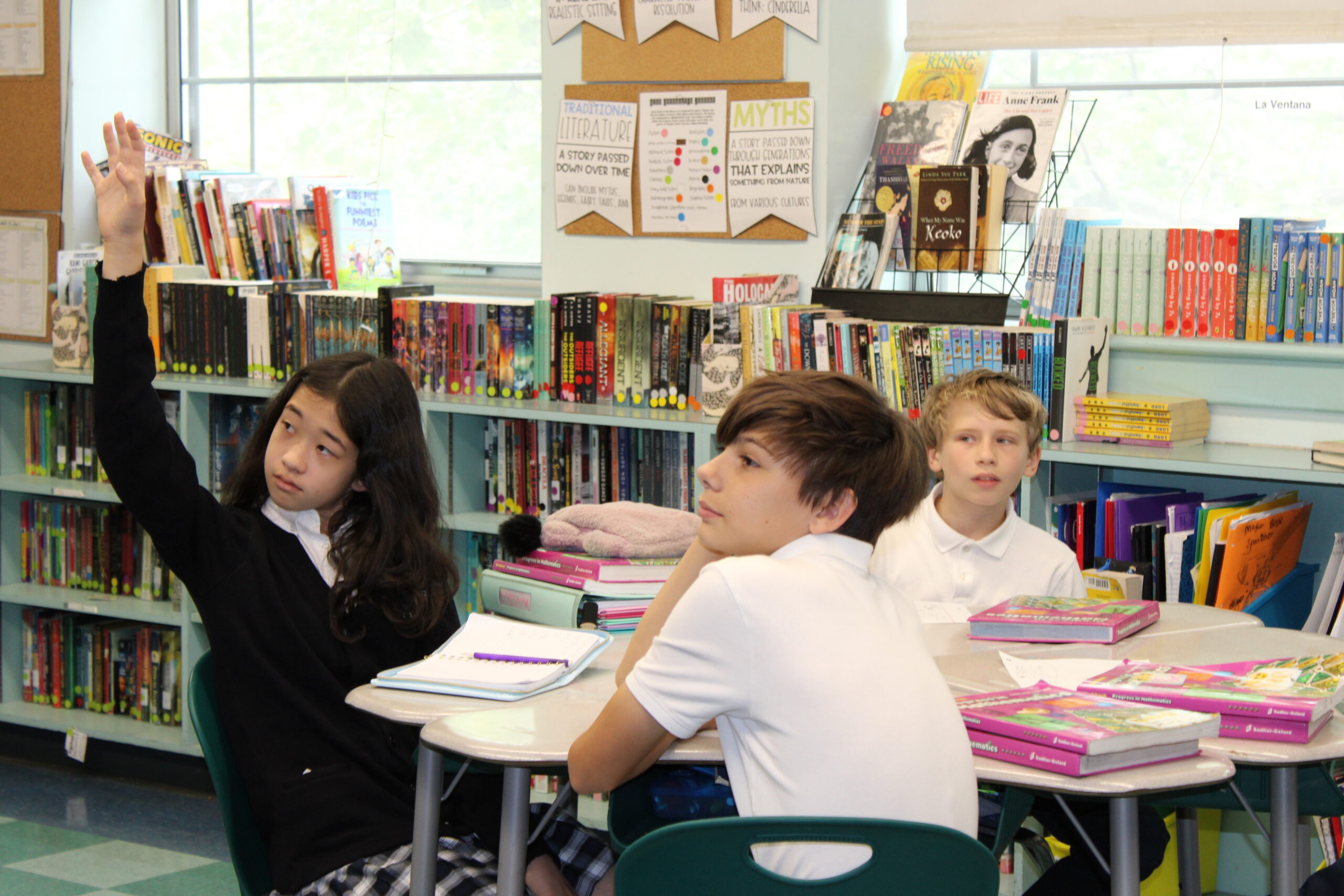Middle School (6th-8th)
St. Francis of Assisi School is an approved International Baccalaureate School, offering the Middle Years program (MYP) for grades 6-8. The MYP offers a broad- based holistic program of education based on the Archdiocesan Course of Study. It is an inclusive program focused on the individual student.
The elements of the curriculum include the following:
-
-
- Learner Profile traits with the mission to develop internationally-minded young people.
- A full range of academic disciplines including the core academics plus Design, Spanish, and Art
- Threads connecting the disciplines making the curriculum challenging, coherent, and relevant
- School-based formative assessment tasks covering a board range of tasks to support learning at all stages
- Summative tasks following students to apply their skills and learning (MYP New Directions)
-
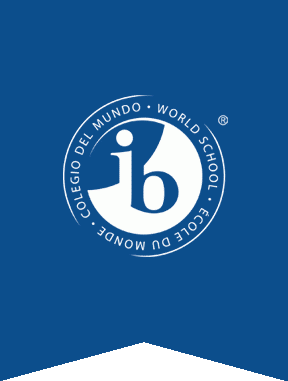
The Benefits of The IB Middle School Program
Our IB Middle Years Program informs the overall SFA approach to teaching and learning by emphasizing an inquiry-based approach. Rather than isolating subject areas from one another in the curriculum, our instructors guide students to apply the content and skills taught by engaging students in inquiry-driven learning activities that allow them to investigate real world issues and solutions to problems. For example: the connection between the role of government and the natural world; the use of math and art skills in engineering design projects; the science behind changes in Earth’s landforms. genuine connections exist between social studies and science when it comes to environmental issues concerning laws and civic responsibility. It is necessary to keep fresh the awareness and use of the many connections evident across all the subjects in the curriculum.
Underlying the curriculum is an emphasis on service that culminates in a Community Project that each eighth grader completes.
All students in grades 6-8 use Chromebooks to support their academics. Several texts are accessed digitally. Google Classroom is used to monitor and submit many assignments.
Some of our students continue their studies at high schools that offer the International Baccalaureate Program. All students find that they have the foundation to participate in rigorous inquiry supported by well-developed written expression skills.
Students in 6th–8th grades learn in a departmentalized setting taught by teachers who specialize in particular subject areas. A cross-curricula team approach is used in our middle school program. Students learn time management skills, note-taking skills, gain self-confidence and ultimately are prepared in every way for quality high schools. Technology is integrated into all subject areas through the 1:1 technology program. In middle school, students move to separate classes for instruction by subject specialists.
Special Events and Programs
- Confirmation preparation
- Liturgy
- Social Justice
Religion
The Archdiocese of Baltimore Middle School Religion Curriculum continues to deepen student understanding of the importance of prayer throughout the church year.
By the completion of sixth grade, students will master a variety of skills including:
-
-
- Exploring various types of church prayer and the place of each in the Liturgical seasons of Advent, Christmas, Lent, Easter and Ordinary time.
- The Nicene Creed provides a further historical context for tenants of faith.
- Focus on the journey of the Jews and many patriarchs of our faith.
- Students explore God’s covenant of love and promises throughout the Old Testament.
- Apply the lessons of empathy, respect, and love to relationships within their families and larger communities.
- Contemporary issues such as world hunger and financial stewardship invite students to create prayer and action as they too journey in faith.
-
By the completion of seventh grade, students will master a variety of skills including:
-
-
- Students delve more deeply into the 7 prayer types of adoration, contrition, thanksgiving, supplication, Lectio Divina, meditation, and contemplation.
- Focuses students on understanding the complex role of the Trinity.
- Students seek a more complete understanding of the life of Jesus through the exploration of the gospels.
- They learn how Jesus listened in prayer to the will of His Father.
- That each person is called to a vocation as either single, married, or as a Religious man or woman.
- Students develop a deeper understanding of the Sacraments of Matrimony and the call to Priesthood through the Sacrament of Holy Orders.
- To build an understanding of making choices to live a moral life in family and larger community. Students examine the core concepts of Catholic Social Teaching and foster ways to work for justice, peace and equality.
-
By the completion of eighth grade, students will master a variety of skills including:
-
-
- A focus on the theology of the Catholic Church by examining its history and integrating the fundamental themes of the Catechism of
the Catholic Church with Scripture and Catholic Social teachings. - Providing students with the knowledge and understanding of how the disciples of Jesus developed the Catechism of the Catholic Church.
- Engaging in rigorous learning experiences that both develop and challenge their thinking skills.
- Prayer, morality, the Sacraments, Scripture, Church Tradition, and Catholic Social Teachings are integrated in lessons that encourage a life long relationship with God and ongoing service to others through a modernized approach to evangelization.
- Students will learn how the early Church was formed and Christianity spread around the world through the Acts of the Apostles and the lives of the Saints.
- The challenges the Church faced throughout history, the formation of Sacraments and Liturgy as well as Church doctrine through the Ecumenical Councils.
- Articulating their faith in Jesus how to apply these beliefs in their daily lives through evangelization leading them into a lasting love for the Church.
- A focus on the theology of the Catholic Church by examining its history and integrating the fundamental themes of the Catechism of
-
Mathematics
The Archdiocese of Baltimore Middle School Mathematics Curriculum continues to utilize the nine mathematical practices. However, they also describe important skills outside the math classroom, both in other subject areas and the real world. Students at all levels will develop these skills gradually throughout their time in Archdiocesan schools in grade-appropriate ways. This work should be nearly done every day and for nearly every topic.
1. Make sense of problems and persevere in solving them.
2. Reason abstractly and quantitatively.
3. Construct viable arguments and critique the reasoning of others.
4. Model with mathematics.
5. Use appropriate tools strategically.
6. Attend to precision.
7. Look for and make use of structure.
8. Look for and express regularity in repeated reasoning.
9. Practice mathematics with a Catholic conscience.
By the completion of sixth grade, students will master a variety of skills including:
Ratios and Proportional Relationships
-
-
- Understand ratio concepts and use ratio reasoning to solve problems.
-
The Number System
-
-
- Apply and extend previous understandings of multiplication and division to divide fractions by fractions.
- Compute fluently with multi-digit numbers and find common factors and multiples.
- Apply and extend previous understandings of numbers to the system of rational numbers.
-
Expressions and Equations
-
-
- Apply and extend previous understandings of arithmetic to algebraic expressions.
- Reason about and solve one-variable equations and inequalities.
- Represent and analyze quantitative relationships between dependent and independent variables.
-
Geometry
-
-
- Solve real-world and mathematical problems involving area, surface area, and volume.
-
Statistics and Probability
-
-
- Develop understanding of statistical variability.
- Summarize and describe distributions.
-
By the completion of seventh grade, students will master a variety of skills including:
Ratios and Proportional Relationships
-
-
- Analyze proportional relationships and use them to solve real-world and mathematical problems.
-
The Number System
-
-
- Apply and extend previous understandings of operations with fractions to add, subtract, multiply, and divide rational numbers.
-
Expressions and Equations
-
-
- Use properties of operations to generate equivalent expressions.
- Solve real-life and mathematical problems using numerical and algebraic expressions and
equations.
-
Geometry
-
-
- Draw, construct and describe geometrical figures and describe the relationships between them.
- Solve real-life and mathematical problems involving angle measure, area, surface area, and volume.
-
Statistics and Probability
-
-
- Use random sampling to draw inferences about a population.
- Draw informal comparative inferences about two populations.
- Investigate chance processes and develop, use, and evaluate probability models.
-
By the completion of eighth grade, students will master a variety of skills including:
Relationships Between Quantities and Reasoning with Equations
-
-
- Reason quantitatively and use units to solve problems.
- Interpret the structure of expressions.
- Create equations that describe numbers or relationships.
- Understand solving equations as a process of reasoning and explain the reasoning.
- Solve equations and inequalities in one variable.
-
Linear and Exponential Relationships
-
-
- Extend the properties of exponents to rational exponents.
- Analyze and solve linear equations and pairs of simultaneous linear equations.
- Solve systems of equations.
- Represent and solve equations and inequalities graphically.
- Define, evaluate, and compare functions.
- Understand the concept of a function and use function notation.
- Use functions to model relationships between quantities.
- Interpret functions that arise in applications in terms of a context.
- Analyze functions using different representations.
- Build a function that models a relationship between two quantities.
- Build new functions from existing functions.
- Construct and compare linear, quadratic, and exponential models and solve problems.
- Interpret expressions for functions in terms of the situation they model.
-
Descriptive Statistics
-
-
- Summarize, represent, and interpret data on a single count or measurement variable.
- Investigate patterns of association in bivariate data.
- Summarize, represent, and interpret data on two categorical and quantitative variables.
- Interpret linear models.
-
Expressions and Equations
-
-
- Interpret the structure of expressions.
- Write expressions in equivalent forms to solve problems.
- Perform arithmetic operations on polynomials.
- Create equations that describe numbers or relationships.
- Solve equations and inequalities in one variable.
- Solve systems of equations.
-
Quadratics Functions and Modeling
-
-
- Use properties of rational and irrational numbers.
- Understand and apply the Pythagorean theorem.
- Interpret functions that arise in applications in terms of a context.
- Analyze functions using different representations.
- Build a function that models a relationship between two quantities.
- Build new functions from existing functions.
- Construct and compare linear, quadratic and exponential models and solve problems.
-
Language Arts
Keeping in mind that sixth grade is a year of transition, the sixth grade curriculum standards and skills will refine fundamental practices and enhance critical skills necessary to become independent learners. With a focus on writing modeled after a variety of rigorous literary and informational text, students will understand the importance of reading and writing as processes which require investigating and evaluating multiple sources, analyzing various points of view, and collaborating with others. These various interactions provide opportunities for students to demonstrate their Catholic identity: respect for self, stewardship, and social justice.
By the completion of sixth grade, students will master a variety of skills including:
Writing
New/Differences:
• Process in research writing
• Process in essay writing
• Voice and tone in writing emphasized
Similarities:
• The writing process
• Using transitions
Reading
New/Differences:
• More Focus in Fiction
• Technology standards specifically addressed
• Informational Reading specifically addressed
Similarities:
• Genre
• Literary Elements
Language
Differences:
• Old: Grammar taught in isolation
• New: Grammar integration
Speaking/Listening
Old: Panel Discussions
New/Differences: Increased the rigor – collaboration, oral presentations, speeches, technology component
By the completion of seventh grade, students will master a variety of skills including:
Reading
By the end of the year, read and comprehend literature, including stories, dramas, informational text, and poems, in the grades 6-8 text complexity band proficiently, with scaffolding as needed at the high end of the range.
Writing
Students will be able to write routinely over extended time frames (time for research, reflection, and revision) and shorter time frames (a single sitting or a day or two) for a range of discipline-specific tasks, purposes, and audiences. Students will be able to write clearly and coherently following appropriate structures, grammar, and organizational rules. Students will be able to write using textual support and evidence, concrete and sequential details, while applying appropriate citation regulations.
Speaking and Listening
By the end of the year, students will gain adequate mastery of a range of skills and applications within the presented 7th grade standards. Students will engage effectively in a range of collaborative discussions (one-on-one, in groups, and teacher-led) with diverse partners on grade 7 topics, texts,
and issues, building on others’ ideas and expressing their own clearly. Students will analyze the main ideas and supporting details presented in diverse media and formats and explain how the ideas clarify a topic, text, or issue under study. Students will delineate a speaker’s argument and specific claims, evaluating the soundness of the reasoning and the relevance and sufficiency of the evidence. Students will present claims and findings, emphasizing salient points in a focused, coherent manner with pertinent descriptions, facts, details, and examples; use appropriate eye contact, adequate volume, and clear pronunciation. Students will include multimedia components and visual displays in presentations to clarify claims and findings and emphasize salient points. Students will adapt speech to a variety of contexts and tasks, demonstrating command of formal English when indicated or appropriate.
Language/Grammar
-
-
- Students should demonstrate command of the conventions of standard English grammar and usage when writing or speaking.
- Students should demonstrate command of the conventions of standard English capitalization, punctuation, and spelling when writing.
- Students should use knowledge of language and its conventions when writing, speaking, reading, or listening.
- Students should determine or clarify the meaning of unknown and multiple-meaning words and phrases based on grade 7 reading and content, choosing flexibly from a range of strategies.
- Students should demonstrate understanding of figurative language, word relationships, and nuances in word meanings.
- Students should acquire and use accurately grade-appropriate general academic and domain-specific words and phrases; gather vocabulary knowledge when considering a word or phrase important to comprehension or expression.
-
By the completion of eighth grade, students will master a variety of skills including:
- This 8th Grade English Language Arts (ELA) curriculum is fully integrated with our Catholic faith. This Catholic Identity Initiative is embraced by Catholic educators from across the country. We provide students with a curriculum that is rigorous and rich in literature, oral and written language, grammar, writing, vocabulary, informational literature, and multimedia/technology. Catholic educators never forget that our schools exist to bring our students to Christ. By continuing to implement new standards that are challenging, we work to fulfill the promise of quality Catholic education that educates the whole child, both mind and soul.
- Students use their knowledge of word origins and word relationships, as well as historical and literary context clues, to determine the meaning of specialized vocabulary and to comprehend the written word. Students read and understand grade-level-appropriate material. They describe and connect the essential ideas, arguments, and perspectives of the text by using their knowledge of text structure, organization, and purpose. Students read a good representation of narrative and expository text (e.g. classic and contemporary literature, magazines, newspapers, online information). Students read and respond to historically or culturally significant works of literature that reflect and enhance their studies of history and social science. They clarify the ideas and connect them to other literary works. Students write clear, coherent, and focused essays. The writing exhibits students’ awareness of audience and purpose. Essays contain formal introductions, supporting evidence, and conclusions. Students progress through the stages of the writing process as needed. Students write narrative, expository, persuasive, and descriptive essays of at least 500 to 700 words in each genre. Student writing demonstrates a command of standard American English and the research, organizational, and drafting strategies. Students write and speak with a command of Standard English writing mechanics including correct grammar and usage that is appropriate to this grade level. Students deliver focused, coherent presentations that convey ideas clearly and relate to the background and interests of the audience. They evaluate the content of oral communication. Students deliver well-organized formal presentations employing traditional rhetorical strategies (e.g., narration, exposition, persuasion, description). Student speaking demonstrates a command of standard American English and the organizational and delivery strategies; this applies spoken, written, and visual language to accomplish the student’s own purpose in a responsible Catholic / Christian manner (e.g., for learning, enjoyment, persuasion, and the exchange of information).
- The enhancements made to the Grade 8 Archdiocese of Baltimore Language Arts Standards include increased text complexity, a greater exposure to informational texts, in-depth and purposeful writing, speaking, and listening. The goal of this curriculum is to fully integrate all areas of language arts (conventions of Standard American English, vocabulary, speaking and listening, reading, writing, and technology) in order to prepare our 21st century learners to be competitive in the global society while staying true to their Catholic Identity
Additional Subject Areas
- Science
- Instructional Technology
- Social Studies
- Visual and Performing Arts
- Physical Education/Health
- World Languages
Explore St. Francis of Assisi School by Grade Level
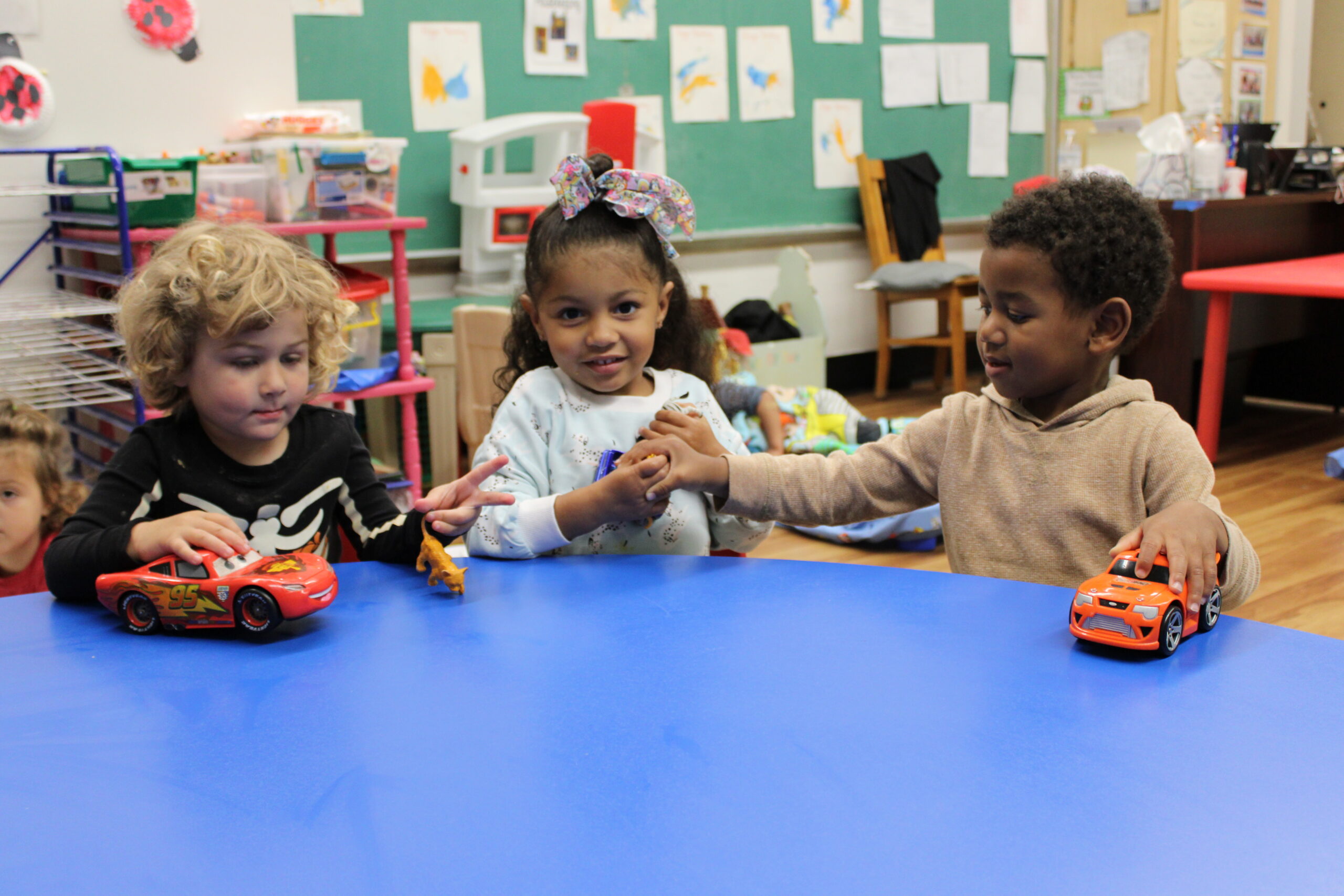
Preschool
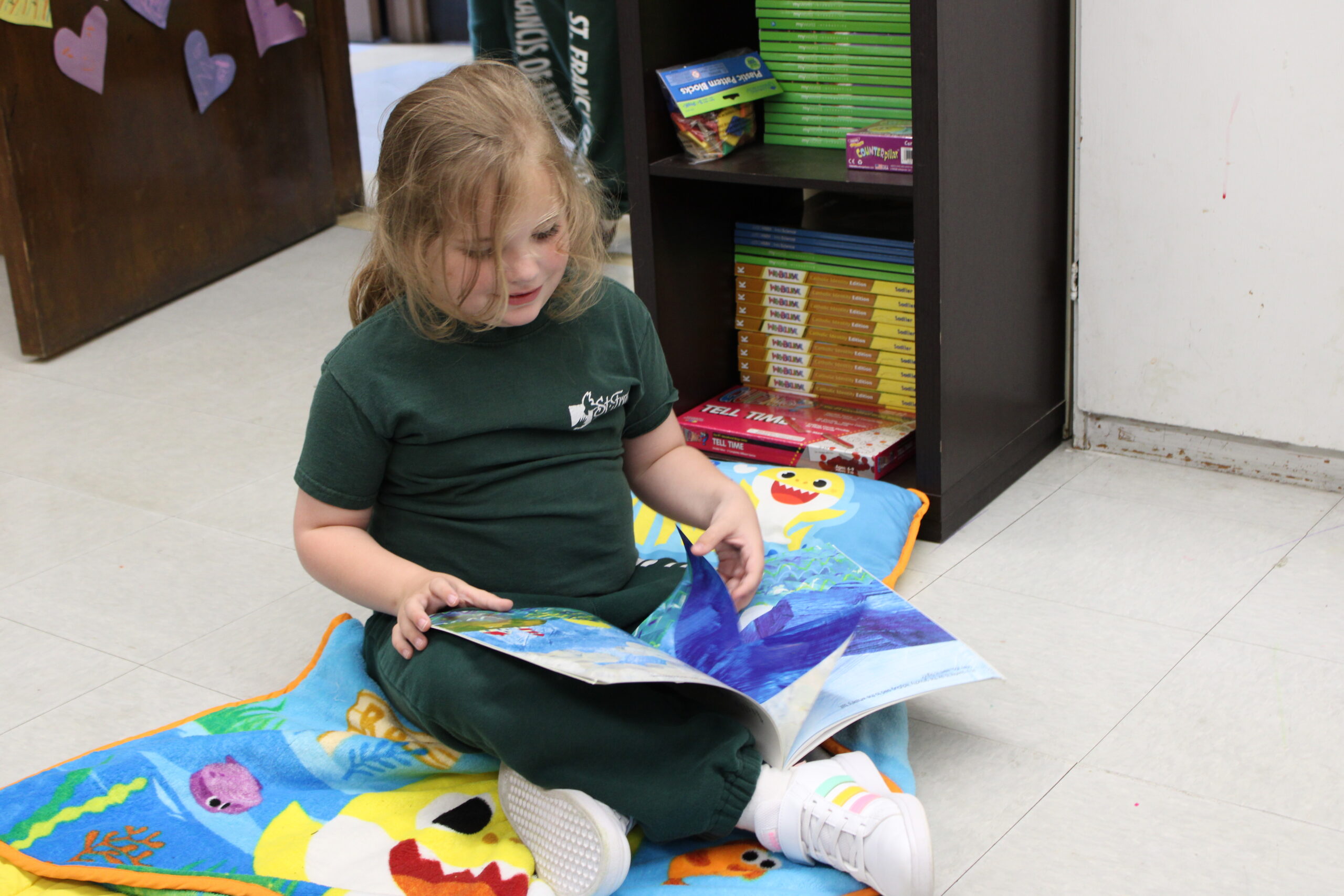
Kindergarten
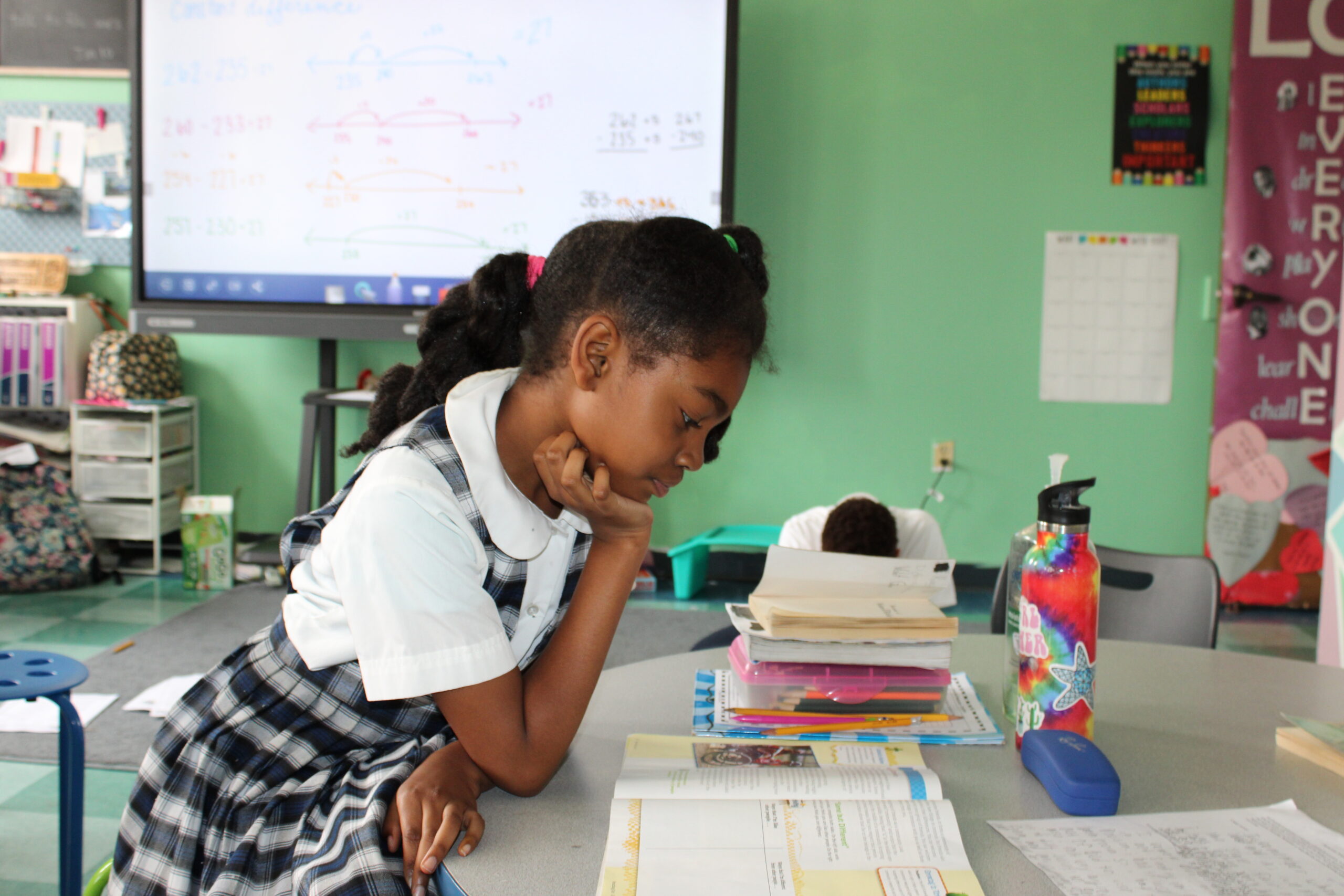
Elementary
